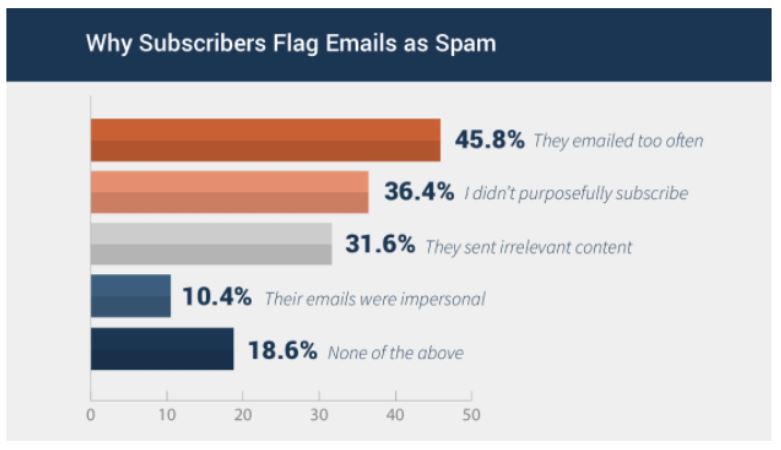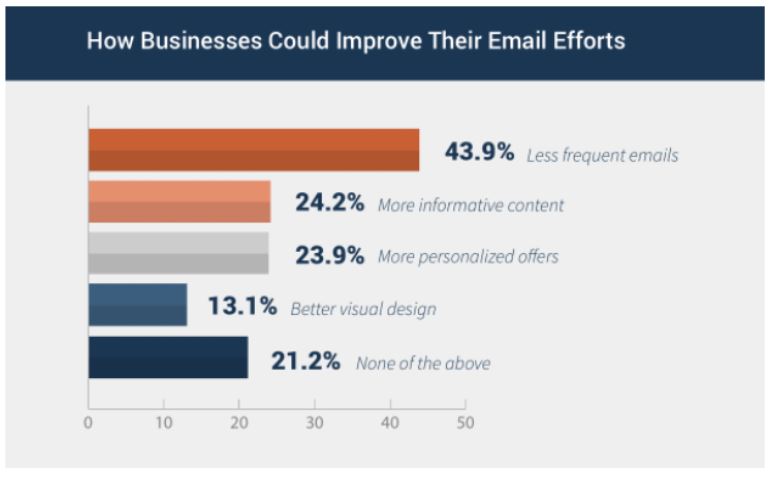
One of the most difficult parts of email deliverability and optimization is the fact no one-size-fits-all solution exists. One sender’s situation can vary so vastly from another that a piece of advice for Sender A would be harmful for Sender B. But something you can start to use to parse out what you need to do to improve your email sender reputation and overall deliverability for better email ROI is figuring out the right volume of email to send in general.
To be clear, this is not exclusively about frequency or solely determined on list size. The sum of these two parts are ultimately what determines your total sending volume. Perhaps a sender with a list of 1 million people sends a daily newsletter, while a large corporation has a list of 30 million but sends only a monthly digest. That’s 30 million messages per month for each, but with the larger organization only sending “one email,” it may seem like they don’t send very much at all. On the flip side, someone receiving daily emails from a brand might get fatigued by the frequency of the smaller organization.
So, how do you know when you’re sending the right amount of email? How much is TOO much?
From a recipient side of things, TechnologyAdvice released some research this year to determine the most common reasons people mark email as spam, and you won’t be surprised by the top reason.

Courtesy of TechnologyAdvice
Similarly, when asked what brands could do to get better at email, they responded simply…do more, but with less.

Courtesy of TechnologyAdvice
By using a platform like Validity for Email, you get insight into some key engagement metrics to help you determine the most appropriate email volume for your subscribers. It’s important to keep an eye on these metrics for several reasons.
For instance, if you bombard subscribers with irrelevant or untimely email, it increases the likelihood they will ignore your messages or mark them as spam. Mailbox providers like Microsoft, Google, and Verizon Media focus on positive and negative subscriber engagement signals as part of their spam filtering process. When subscribers ignore or complain about your brand’s messages, it is an indication to mailbox providers that your messages are not wanted and should be delivered to the spam folder rather than the inbox.
This can lead to all messages being placed in the spam folder, which may prevent even active subscribers from seeing your messages in their inbox. If no one is seeing your email, no one is acting on your email, and your ROI tanks.
To avoid such a fate, it is critical to have visibility to subscriber engagement metrics. Pay close attention to positive engagement rates, like opens and clicks, but also monitor negative signals like spam complaints or your “deleted without read” rate. These metrics will fluctuate based on factors such as seasonality or current world events. If you’re not planning your email strategy around these metrics and playing the email long-game, you might end up sending too much mail. For example, an amusement park closed during winter would not (and definitely should not) send as many messages during those months. If the message frequency isn’t appropriately adjusted, you’ll see a decrease in subscribers’ tolerance of your messages.
Though Validity can give you the hard numbers, we know life isn’t just a numbers game. You’ll want to also get into the hearts and minds of your customers by doing a little more investigation. Try providing an unsubscribe survey as people are opting out of your emails, or send a one-off email, maybe in your welcome sequence, allowing your recipients to customize their email frequency. You can even have subscribers choose their frequency preference during the sign-up process to customize their experience and reduce the likelihood of message fatigue.
Above all, don’t forget email is still a means of conversation. You don’t want to have a one-sided conversation with someone who has tuned you out. Be a good conversationalist, use all your senses (metrics!) to pick up on signals, and you’ll start to know exactly how much email is too much email.